
Valle d'Aosta: Italy's Alpine Gem
Discover Valle d'Aosta: Italy's Alpine paradise, where ancient history meets breathtaking landscapes and rich culinary delights in the heart of the Italian Alps.
Nestled in the heart of the Italian Alps, Valle d'Aosta is a haven for nature lovers and history buffs alike. This enchanting region offers a unique blend of stunning landscapes, rich cultural heritage, and delectable cuisine. Surrounded by towering peaks and picturesque valleys, it's a perfect escape for those seeking tranquility and adventure. The region is dotted with ancient castles, Roman ruins, and charming villages that transport you back in time. Don't miss the iconic Fort Bard, a fortress that has withstood centuries and now houses a modern museum. The Roman Theatre in Aosta town is another must-see, showcasing the grandeur of the ancient era. Valle d'Aosta is also a paradise for outdoor enthusiasts. Whether you enjoy skiing, hiking, or simply soaking in breathtaking views, this region has it all. The famous Gran Paradiso National Park offers splendid trails and the chance to spot wildlife in its natural habitat. In winter, world-class ski resorts like Courmayeur and Cervinia attract visitors from around the globe. Foodies will delight in the local gastronomy. Indulge in regional specialties such as fontina cheese, hearty stews, and exquisite wines. The local markets and cozy trattorias provide a true taste of Valle d'Aosta's culinary traditions.
Local tips in Valle d'Aosta
- Visit in late spring or early autumn for the best weather and fewer crowds.
- Purchase a multi-museum pass to save on entrance fees to key attractions.
- Try the local wines, especially the red wines from the region's small vineyards.
- Pack layers; the weather can change quickly in the mountains.
- Learn a few basic Italian phrases; locals appreciate the effort.
Valle d'Aosta: Italy's Alpine Gem
Nestled in the heart of the Italian Alps, Valle d'Aosta is a haven for nature lovers and history buffs alike. This enchanting region offers a unique blend of stunning landscapes, rich cultural heritage, and delectable cuisine. Surrounded by towering peaks and picturesque valleys, it's a perfect escape for those seeking tranquility and adventure. The region is dotted with ancient castles, Roman ruins, and charming villages that transport you back in time. Don't miss the iconic Fort Bard, a fortress that has withstood centuries and now houses a modern museum. The Roman Theatre in Aosta town is another must-see, showcasing the grandeur of the ancient era. Valle d'Aosta is also a paradise for outdoor enthusiasts. Whether you enjoy skiing, hiking, or simply soaking in breathtaking views, this region has it all. The famous Gran Paradiso National Park offers splendid trails and the chance to spot wildlife in its natural habitat. In winter, world-class ski resorts like Courmayeur and Cervinia attract visitors from around the globe. Foodies will delight in the local gastronomy. Indulge in regional specialties such as fontina cheese, hearty stews, and exquisite wines. The local markets and cozy trattorias provide a true taste of Valle d'Aosta's culinary traditions.
When is the best time to go to Valle d'Aosta?
Iconic landmarks you can’t miss
Castello di Fénis
Experience the grandeur of Castello di Fénis, a medieval castle in Aosta Valley, Italy, steeped in history and stunning architecture.
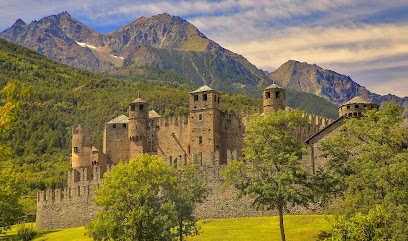
Arco di Augusto
Explore the Arco di Augusto, a stunning Roman triumphal arch in Aosta, Italy, showcasing ancient architecture and rich history.
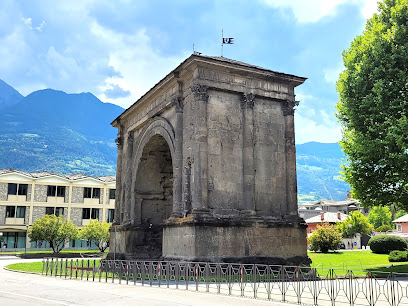
Roman Theatre
Discover the Roman Theatre in Aosta, a stunning historical landmark that showcases the architectural brilliance of ancient Rome amidst the picturesque Aosta Valley.
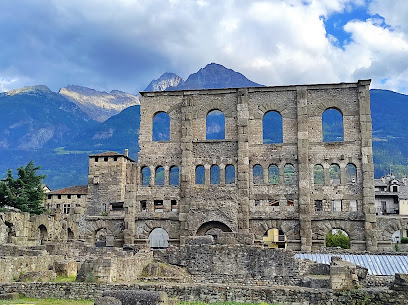
Porta Pretoria
Explore the historic Porta Pretoria in Aosta, Italy, an ancient Roman gateway filled with rich history and stunning architecture.
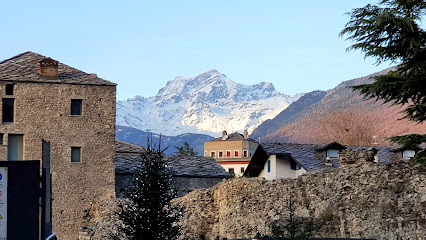
Issogne Castle
Explore Issogne Castle, a stunning medieval fortress in Aosta Valley, renowned for its breathtaking frescoes and captivating history.
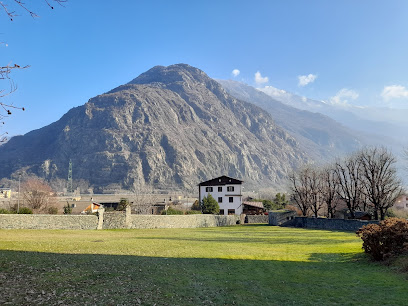
Castello Reale di Sarre
Discover the enchanting Castello Reale di Sarre, a royal retreat in the heart of Aosta Valley, showcasing stunning architecture and rich history.

Verrès Castle
Explore the enchanting Verrès Castle, a medieval fortress in Aosta Valley, offering stunning views and rich history for every traveler.
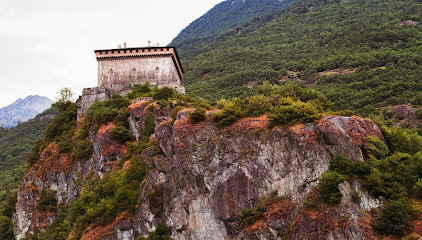
Pont d'Aël
Explore the stunning Pont d'Aël, a well-preserved Roman aqueduct in Aosta Valley, showcasing ancient engineering and breathtaking natural beauty.
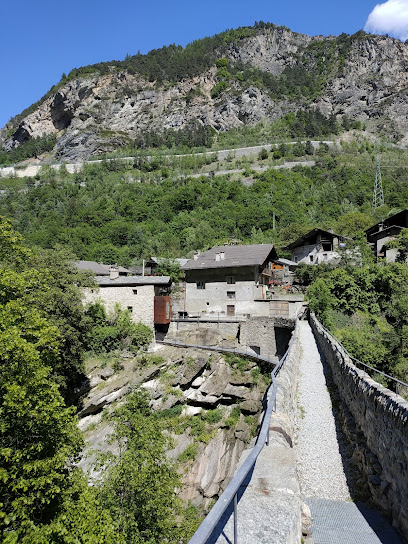
Criptoportico Forense
Discover the historical allure of Criptoportico Forense, a remarkable Roman landmark in the heart of Aosta, Italy, showcasing ancient architecture and rich heritage.
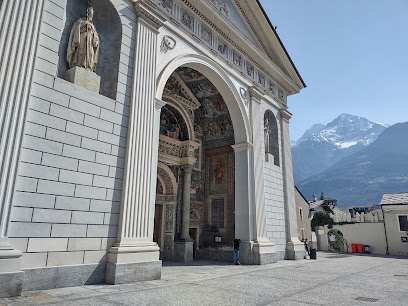
Croix-de-ville
Explore the historical charm of Croix-de-ville in Aosta, an enchanting landmark blending rich heritage with vibrant local culture and stunning mountain views.
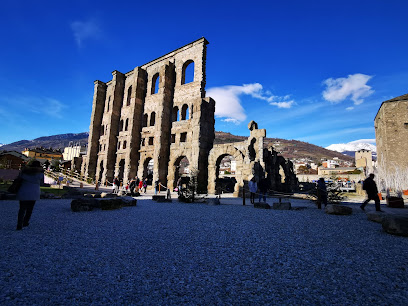
Castello Sarriod de La Tour
Discover the medieval charm of Castello Sarriod de La Tour in Aosta Valley, where history, architecture, and breathtaking views await your exploration.
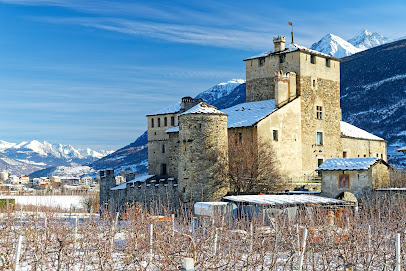
Roman Walls
Discover the ancient Roman Walls of Aosta, a stunning historical site blending rich heritage with breathtaking views of the surrounding Italian landscape.
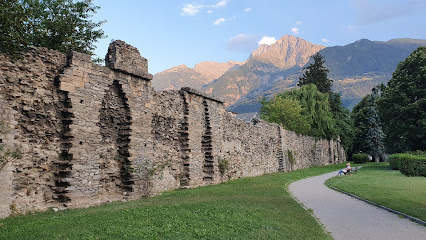
Tour Neuve
Explore Tour Neuve, a historical landmark in Aosta Valley, showcasing Roman architecture and breathtaking views of the surrounding landscapes.
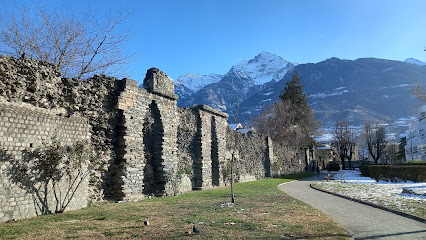
Unmissable attractions to see
Fort of Bard
Explore the breathtaking Fort of Bard, a historic fortress and museum in the Aosta Valley, offering stunning views and rich cultural experiences.

QC Terme Pré Saint Didier
Discover rejuvenation and tranquility at QC Terme Prè Saint Didier, a luxurious spa retreat in Aosta Valley with breathtaking mountain views and healing thermal waters.
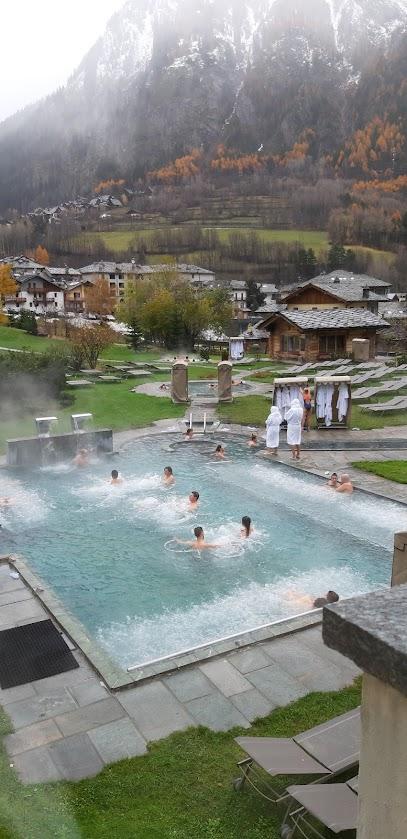
Castello di Fénis
Explore the enchanting Castello di Fénis, a medieval jewel in Aosta Valley, showcasing stunning architecture and rich cultural heritage.
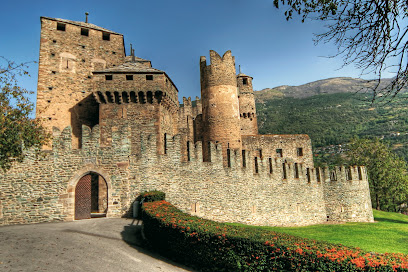
Parco di Brusson
Discover the serene beauty of Parco di Brusson, a picturesque park in Aosta Valley perfect for relaxation, nature walks, and breathtaking views.
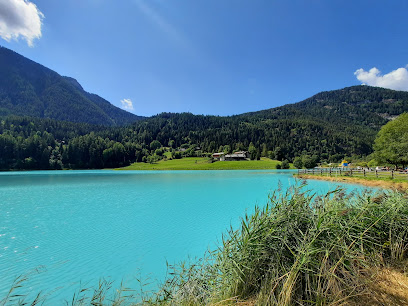
Cascate di Lillaz
Explore the breathtaking Cascate di Lillaz - a stunning waterfall oasis in the heart of the Aosta Valley, perfect for hiking and nature lovers.
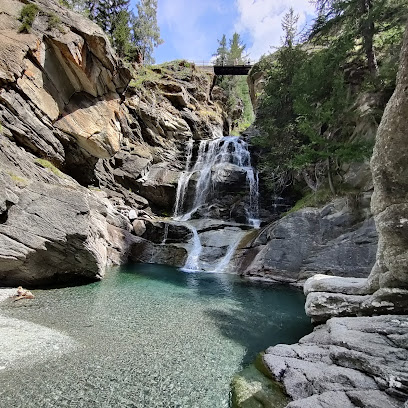
Issogne Castle
Explore the stunning Issogne Castle in Aosta Valley, Italy, a historical gem with breathtaking architecture and captivating gardens.
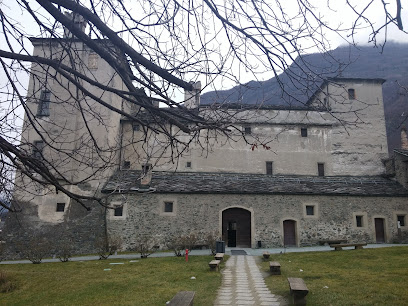
Castello Reale di Sarre
Experience the splendor of Castello Reale di Sarre, a historical castle in Aosta Valley with breathtaking views and rich royal heritage.

Saussurea Alpine Botanical Garden
Explore the stunning Saussurea Alpine Botanical Garden, home to diverse alpine flora and breathtaking mountain views in Aosta Valley.
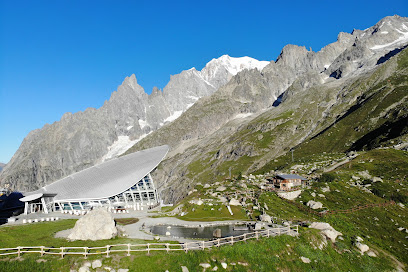
Castello di Aymavilles
Explore the enchanting Castello di Aymavilles in Aosta Valley, a stunning blend of history and architecture offering breathtaking views and fascinating exhibits.
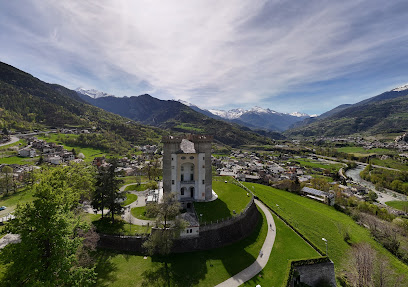
Verrès Castle
Explore the majestic Verrès Castle in the Aosta Valley, a historical gem with stunning architecture and panoramic views of the Italian Alps.

Pont d'Aël
Discover the awe-inspiring Pont d'Aël, an ancient Roman aqueduct in Aosta Valley, surrounded by stunning landscapes and rich history.
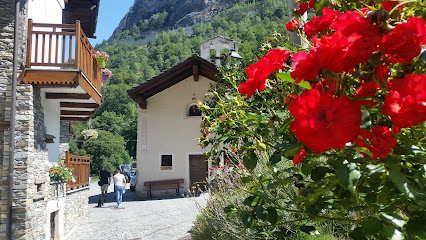
Office de Tourisme de Chamonix-Mont-Blanc
Explore the Mont-Blanc region with expert guidance from the Chamonix-Mont-Blanc Tourist Information Center, your essential resource for adventure.
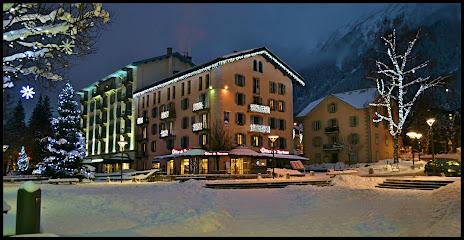
Criptoportico Forense
Explore the Criptoportico Forense in Aosta, a captivating Roman structure that unveils the rich history and architectural beauty of Italy's ancient past.
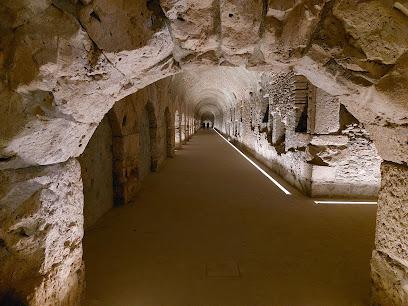
Matterhorn Museum - Zermatlantis
Explore the Matterhorn Museum - Zermatlantis, a captivating journey through the history of Zermatt and its iconic mountain.
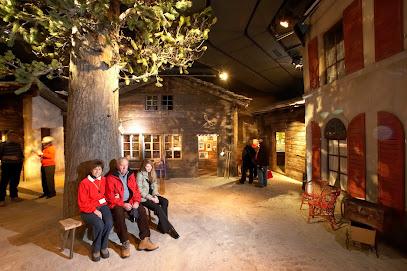
Aosta Cathedral
Discover the historical beauty of Aosta Cathedral, a stunning example of medieval architecture in the heart of Aosta Valley, Italy.
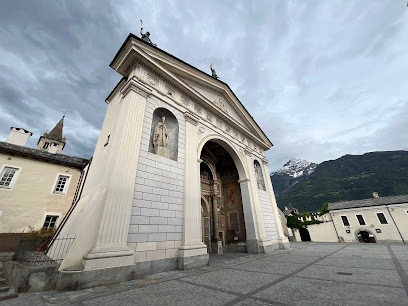
Essential places to dine
Osteria La Vache Folle
Experience authentic Italian cuisine at Osteria La Vache Folle in Aosta - where every meal is a celebration of local flavors.
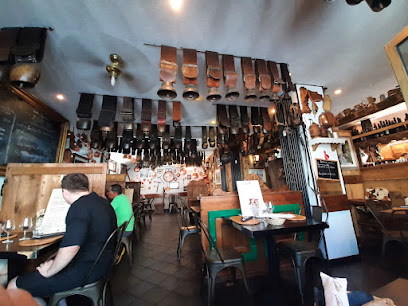
Osteria dell'Oca
Experience authentic Italian cuisine at Osteria dell'Oca in Aosta, where local ingredients meet traditional recipes for an unforgettable meal.
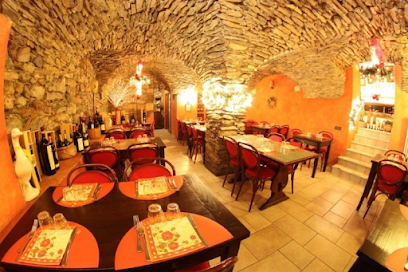
Bataclan Restaurant Pizza & Music
Discover Bataclan Restaurant Pizza & Music: Savor authentic Italian pizzas in a beautiful garden setting while enjoying live music in Aosta.
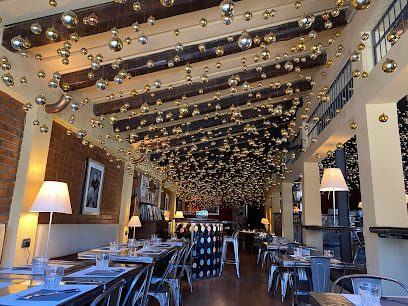
Moderno • Pizzeria Restaurant
Experience authentic Italian cuisine at Moderno Pizzeria in Aosta Valley – home to delicious pizzas and a warm atmosphere.
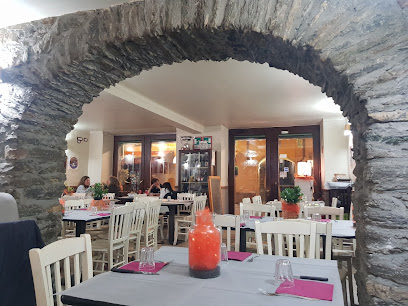
Hostaria del Calvino Trattoria Ristorante Aosta
Experience authentic Italian cuisine at Hostaria del Calvino in Aosta – where tradition meets taste in every dish.
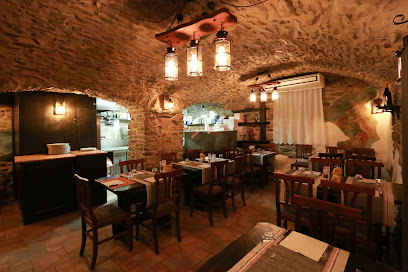
Aldente Restaurant
Discover authentic Northern Italian cuisine at Aldente Restaurant in Aosta - where tradition meets flavor in every dish.
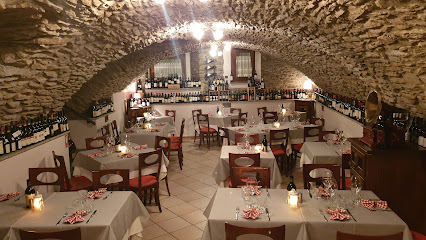
Trattoria Praetoria
Experience authentic Italian cuisine at Trattoria Praetoria in Aosta - where tradition meets flavor in every dish.
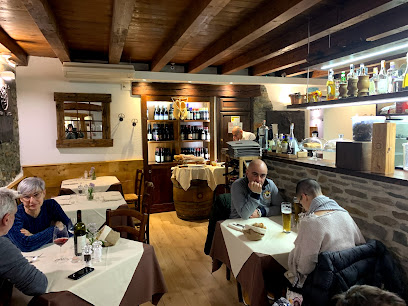
L'Osteria
Experience authentic Italian cuisine paired with exquisite local wines at L'Osteria in Aosta Valley.
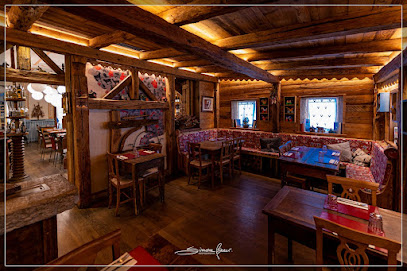
Brasserie Busseyaz
Experience the best seafood and Italian cuisine at Brasserie Busseyaz in Aosta Valley - where flavor meets tradition.
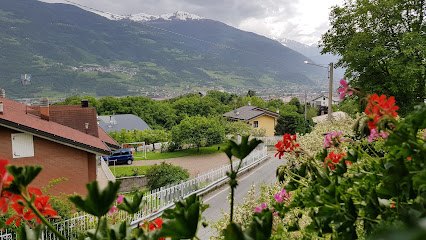
Ad Forum
Experience authentic Italian cuisine at Ad Forum in Aosta - where tradition meets modern flair in a cozy setting.

La Rotonda
Experience authentic Italian dining at La Rotonda in Aosta - where every meal feels like a taste of Italy.
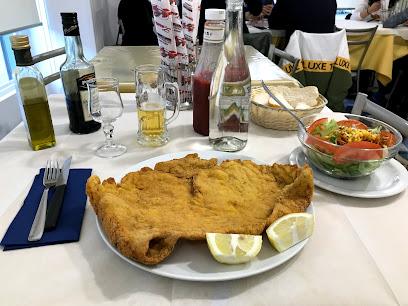
Ristorante Osteria da Nando Cucina Tipica Aosta
Experience the heart of Italian gastronomy at Ristorante Osteria da Nando in Aosta Valley - where tradition meets taste.
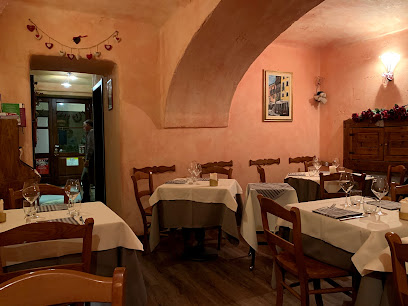
Ristorante Bistro’ Maison Bandí
Discover authentic Italian flavors at Ristorante Bistro’ Maison Bandí in Aosta – where tradition meets exquisite taste.
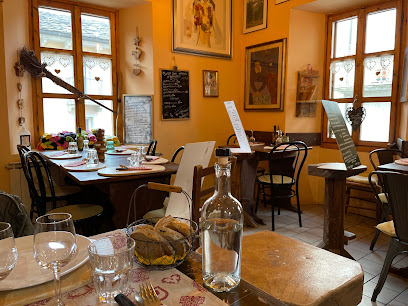
Ristorante Les Gourmets
Experience authentic Italian cuisine at Ristorante Les Gourmets in Aosta – where seafood meets pizza in a cozy setting.
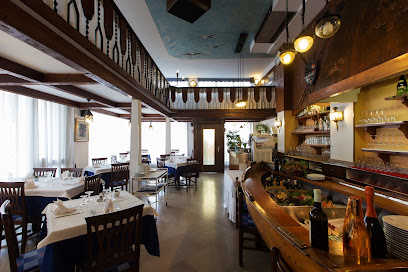
Break House
Discover authentic Italian flavors at Break House in Aosta - home to delicious pizzas and fresh seafood in a cozy atmosphere.
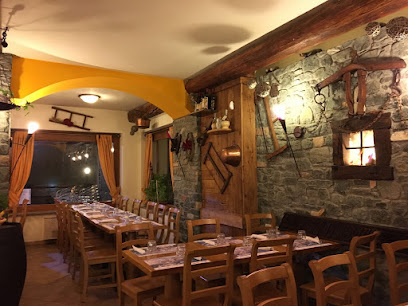
Markets, malls and hidden boutiques
Gros Cidac Store
Discover the vibrant shopping experience at Gros Cidac Store in Aosta, offering local delicacies and international products in a welcoming atmosphere.
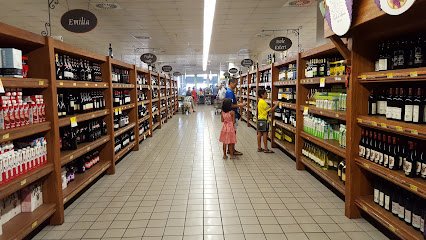
Les Halles d'Aoste
Discover the vibrant shopping experience at Les Halles d'Aoste, where local culture meets modern retail in the heart of Aosta Valley.
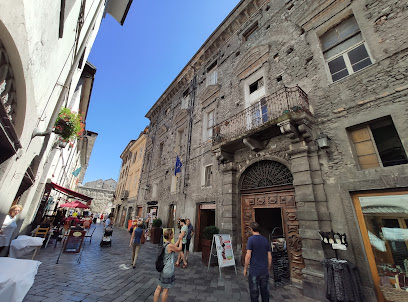
Tigota
Discover a world of beauty and wellness at Tigota, the ultimate health and beauty shop in the heart of Aosta Valley.
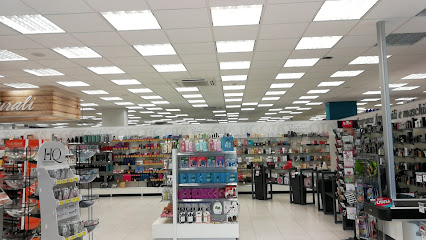
Cisalfa Sport Aosta
Explore Cisalfa Sport Aosta for top-quality sporting goods and equipment in the heart of the stunning Aosta Valley, Italy.
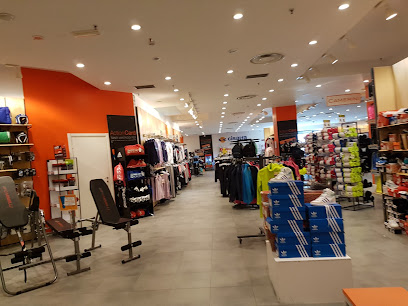
Gamestop
Discover the ultimate gaming destination in Aosta Valley at Gamestop, where toys, comics, and video games await every enthusiast.

La Bottegaccia
Explore the flavors of Aosta Valley at La Bottegaccia, your go-to destination for fine wines, artisan cheeses, and gourmet delights.
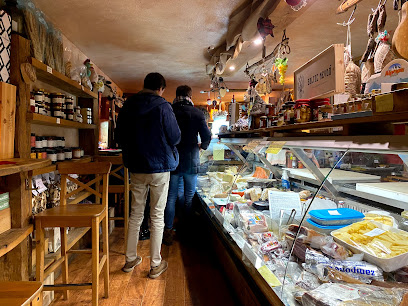
Acquario Octopus
Discover Acquario Octopus in Villair-Amerique, a delightful pet supply store offering quality products and friendly service for all pet lovers visiting Aosta Valley.
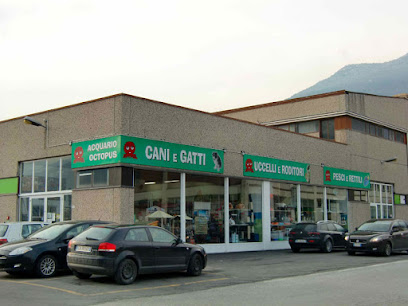
BRUNO TEX
Discover the charm of Aosta Valley at Bruno Tex, your ultimate shopping destination for home goods and unique finds.
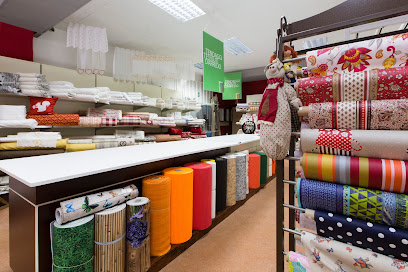
Vertical No Limits Aosta
Discover top-notch outdoor gear and expert advice at Vertical No Limits Aosta, your adventure starts here in the stunning Aosta Valley.
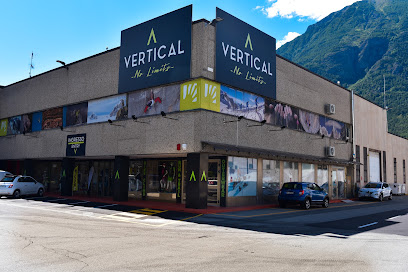
Montura Store Aosta
Explore the outdoors with top-quality gear from Montura Store Aosta, your one-stop shop for all sporting goods in Aosta Valley, Italy.
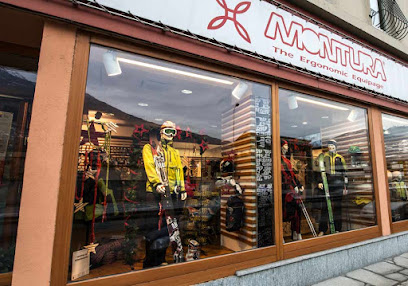
Conbipel
Explore Conbipel in Villair-Amerique for trendy, affordable fashion that embodies the essence of Aosta Valley's style.

Cooperativa Produttori Latte e Fontina - Chalet di Vendita
Experience the exquisite taste of Fontina cheese at Cooperativa Produttori Latte e Fontina, a treasure in Aosta Valley's culinary landscape.
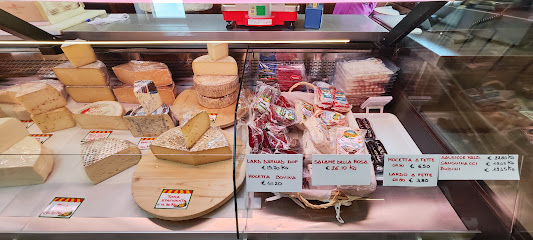
CVG
Discover the latest trends and stylish apparel at CVG, a premier clothing store in scenic Saint-Christophe, Aosta Valley.
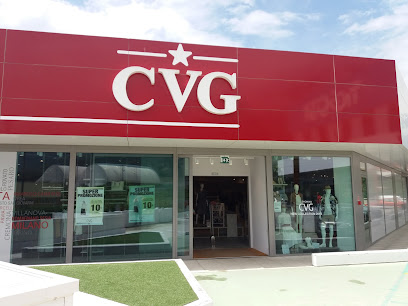
CASA Saint-Christophe
Explore CASA Saint-Christophe in Aosta Valley for unique gifts and home decor that embody local craftsmanship and contemporary design.
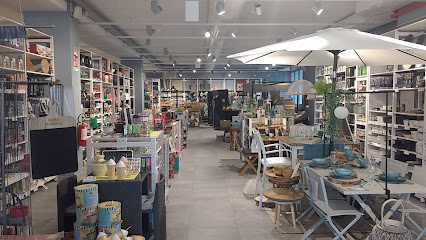
Antica Latteria Erbavoglio
Discover the rich flavors of Aosta Valley at Antica Latteria Erbavoglio, a premier cheese and wine shop offering artisanal delights.

Essential bars & hidden hideouts
Birrificio '63
Discover the flavors of Aosta at Birrificio '63, a premier brasserie and brewpub offering local craft beers and authentic Italian cuisine.
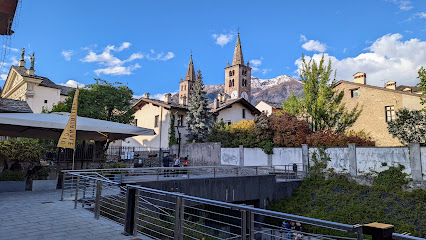
Ad Forum
Experience the essence of Italian cuisine at Ad Forum, a delightful restaurant and wine bar in the heart of Aosta, where every meal is a celebration.
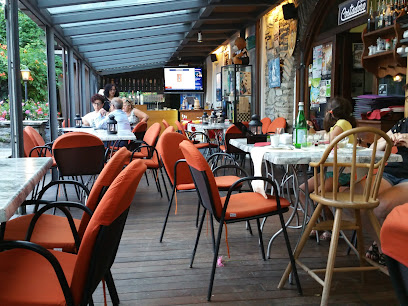
Gekoo
Discover the vibrant bar scene at Gekoo in Aosta, where locals and tourists meet for drinks, laughter, and unforgettable memories.
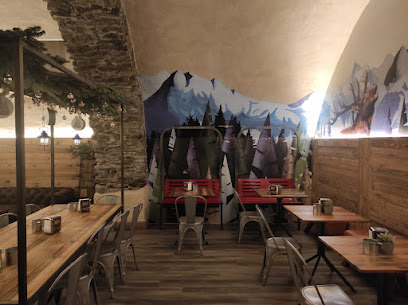
Old Distillery
Experience the charm of Aosta at the Old Distillery Pub, where local flavors meet a vibrant atmosphere in the heart of the Aosta Valley.

Saint-Vout
Experience the authentic flavors of Aosta at Saint-Vout, a charming bistro offering local dishes and an impressive wine selection.
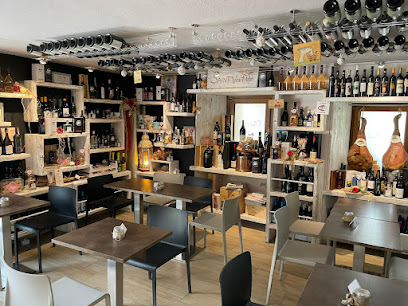
La Strega - Restaurant Wine Bar
Discover the flavors of Aosta at La Strega, a delightful restaurant and wine bar offering a unique culinary experience with local specialties and fine wines.
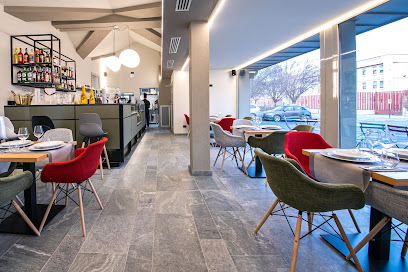
Il Baretto di Sant'Orso gintoneria
Discover Il Baretto di Sant'Orso, Aosta's premier gin bar offering a cozy atmosphere and an exceptional selection of spirits.
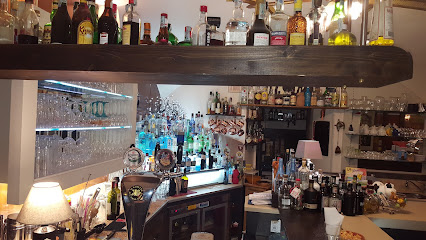
MPC Maison Publique de la Cervoise
Discover the vibrant atmosphere and local brews at MPC Maison Publique de la Cervoise, Aosta's charming beer hall and pub.
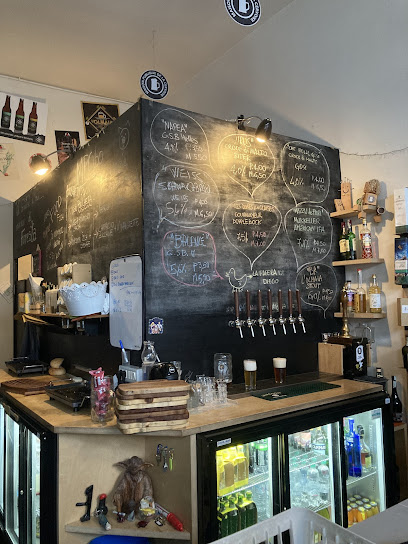
Beautiful
Discover Aosta's vibrant nightlife at Beautiful, a lively pub offering local brews and a warm atmosphere perfect for socializing.
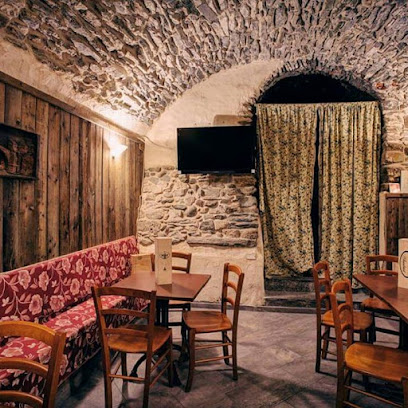
Bar Roma
Experience the vibrant atmosphere of Bar Roma in Aosta, where local flavors and a warm ambiance create unforgettable moments.
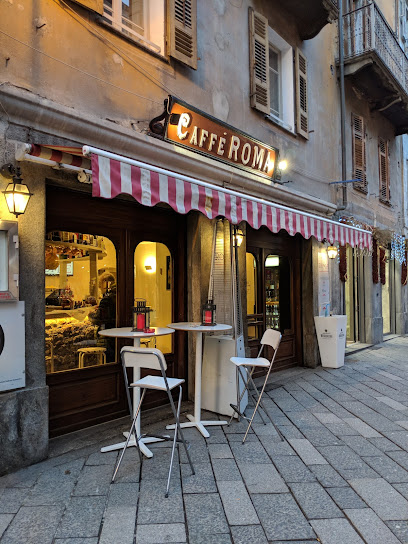
Crazy Fox
Discover Crazy Fox, a lively bar in Aosta Valley, offering an impressive selection of craft beers, cocktails, and a warm, inviting atmosphere.
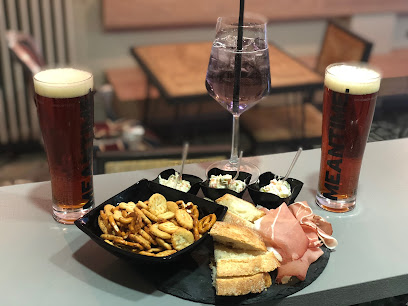
Artis Mixology & Lab
Experience the art of cocktail making at Artis Mixology & Lab, where creativity meets taste in the heart of Aosta, Italy.
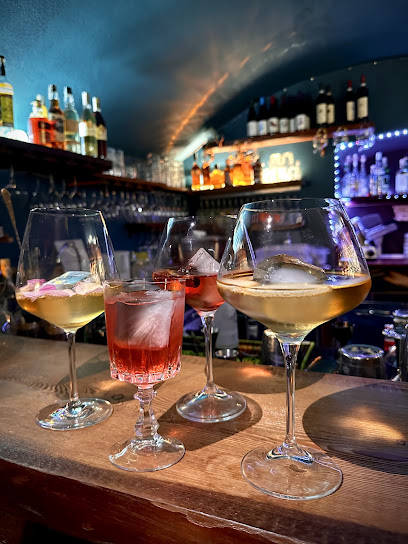
Bar Papà Marcel
Discover the charm of Aosta at Bar Papà Marcel, where local flavors and a friendly atmosphere await every visitor.
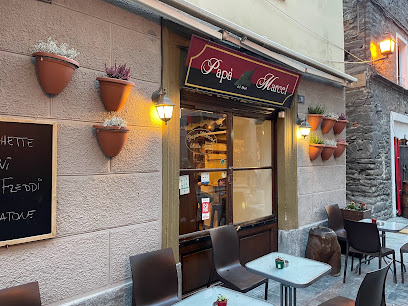
Decanter Aosta
Discover the charm of Decanter Aosta, a wine bar offering exquisite local and international wines in the heart of Aosta Valley, Italy.
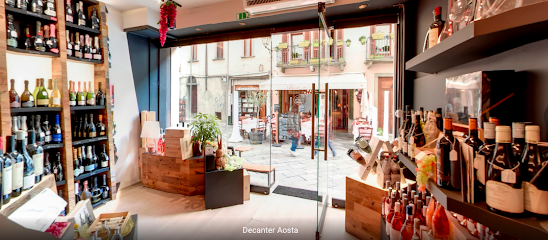
101bar Cocktails & Music - Specialità Gnocco Fritto
Discover the lively 101bar in Aosta, where exquisite cocktails meet traditional gnocco fritto in a vibrant atmosphere.

Local Phrases about Valle d'Aosta
-
- HelloBonjour
[bon-zhoor] - GoodbyeAu revoir
[oh re-vwar] - YesOui
[wee] - NoNon
[nohn] - Please/You're welcomeS'il vous plaît/De rien
[seel voo play/dee ree-ehn] - Thank youMerci
[mehr-see] - Excuse me/SorryExcusez-moi/Désolé
[ex-kew-zay mwah/day-zoh-lay] - How are you?Comment allez-vous?
[koh-mohn tah-lay voo] - Fine. And you?Bien. Et vous?
[byehn/eh voo] - Do you speak English?Parlez-vous anglais?
[par-lay voo ahn-glay] - I don't understandJe ne comprends pas
[zhuh nuh kohm-prahnd pah]
- HelloBonjour
-
- I'd like to see the menu, pleaseJe voudrais voir le menu, s'il vous plaît
[zhuh voo-dray vwahr luh men-oo, seel voo play] - I don't eat meatJe ne mange pas de viande
[zhuh nuh mahnzh pah duh vyand] - Cheers!Santé!
[sahn-tay] - I would like to pay, pleaseJe voudrais payer, s'il vous plaît
[zhuh voo-dray pay-ay, seel voo play]
- I'd like to see the menu, pleaseJe voudrais voir le menu, s'il vous plaît
-
- Help!Au secours!
[oh suh-koor] - Go away!Allez-vous en!
[ah-lay voo zan] - Call the Police!Appelez la police!
[ah-puh-lay lah poh-lees] - Call a doctor!Appelez un médecin!
[ah-puh-lay uhn may-deh-sahn] - I'm lostJe suis perdu(e)
[zhuh swee pair-doo] - I'm illJe suis malade
[zhuh swee mah-lahd]
- Help!Au secours!
-
- I'd like to buy...Je voudrais acheter...
[zhuh voo-dray zheh-tey] - I'm just lookingJe regarde juste
[zhuh ruh-gahrd zhewst] - How much is it?Combien ça coûte?
[kohm-byen sah koot] - That's too expensiveC'est trop cher
[say troh shair] - Can you lower the price?Pouvez-vous baisser le prix?
[poo-vey voo beh-say luh pree]
- I'd like to buy...Je voudrais acheter...
-
- What time is it?Quelle heure est-il?
[kel uhr eh-teel] - It's one o'clockIl est une heure
[eel eh zewn uhr] - Half past (10)Dix heures et demie
[deez uhr ay duh-mee] - MorningMatin
[mah-tan] - AfternoonAprès-midi
[ah-prey mee-dee] - EveningSoir
[swahr] - YesterdayHier
[yehr] - TodayAujourd'hui
[oh-zhoor dew-ee] - TomorrowDemain
[duh-man] - 1Un
[uhn] - 2Deux
[duh] - 3Trois
[trwah] - 4Quatre
[katr] - 5Cinq
[sank] - 6Six
[sees] - 7Sept
[sept] - 8Huit
[wheet] - 9Neuf
[nuf] - 10Dix
[dee]
- What time is it?Quelle heure est-il?
-
- Where's a/the...?Où est le/la...?
[oo eh luh/lah] - What's the address?Quelle est l'adresse?
[kel eh lah-dress] - Can you show me (on the map)?Pouvez-vous me montrer (sur la carte)?
[poo-vey voo muh mohn-tray (surr lah kart)] - When's the next (bus)?Quand est le prochain (bus)?
[kahn eh luh proh-shahn (bus)] - A ticket (to ....)Un billet (pour ....)
[uhn bee-yay (poor)]
- Where's a/the...?Où est le/la...?
History of Valle d'Aosta
-
Before the Romans arrived, Valle d'Aosta was inhabited by the Salassi, a Celtic tribe known for their fierce independence and control over the region's precious metal resources, particularly gold. They resisted Roman conquest for years until General Terentius Varro finally subdued them in 25 BCE. The Roman victory led to the establishment of the colony of Augusta Praetoria Salassorum, now known as Aosta.
-
The Romans left an indelible mark on Valle d'Aosta, evident in the town of Aosta, often referred to as the 'Rome of the Alps.' Established in 25 BCE, the city features remarkable Roman architecture, including the Arch of Augustus, the Praetorian Gate, and a well-preserved Roman theatre. The Roman grid plan of the city still influences its layout today.
-
During the Middle Ages, Valle d'Aosta became a battleground for control among various feudal lords. Castles like Fénis, Verrès, and Issogne were built as fortresses and residences. The region was heavily fortified to protect against invasion and to assert dominance over the strategic Alpine passes.
-
In the 11th century, Valle d'Aosta came under the control of the House of Savoy, a dynasty that ruled for centuries and played a crucial role in the unification of Italy. The Savoyards implemented administrative and economic reforms that helped develop the region. Their legacy is visible in numerous castles, churches, and other historical buildings.
-
The arrival of Napoleon Bonaparte in the late 18th century brought significant changes to Valle d'Aosta. The region was annexed to the French Empire, leading to the implementation of the Napoleonic Code. After Napoleon's fall, Valle d'Aosta was returned to the Kingdom of Sardinia and eventually became part of unified Italy in 1861. The region retained a degree of autonomy, preserving its unique cultural and linguistic heritage.
-
Valle d'Aosta was significantly affected by both World Wars. During World War II, the region was a site of resistance against Fascist and Nazi forces. After the war, Valle d'Aosta was granted special autonomous status in 1948, recognizing its unique linguistic and cultural identity. This autonomy has allowed the region to preserve its Franco-Provençal language and traditions while integrating into modern Italy.
-
Valle d'Aosta is rich in cultural traditions that reflect its diverse history. The 'Foire de Saint-Ours' in Aosta, held every January, is one of the most famous events, celebrating local craftsmanship and artisanship. Other notable traditions include the Batailles de Reines, a series of cow fighting events that highlight the region's agricultural heritage, and the vibrant celebrations of Carnevale, showcasing colorful costumes and parades.
Valle d'Aosta Essentials
-
Valle d'Aosta is located in the northwestern part of Italy, near the borders with France and Switzerland. The nearest international airport is Turin-Caselle Airport (TRN), approximately 115 kilometers away. From Turin, you can take a train or bus to Aosta, the region's capital. Alternatively, you can fly into Milan Malpensa Airport (MXP) or Geneva Airport (GVA) and then take a train or rent a car for the scenic drive to Valle d'Aosta. The region is also accessible by car via the A5 motorway, which connects to the main Italian highway network.
-
Within Valle d'Aosta, the most convenient mode of transportation is by car, especially if you plan to explore the smaller villages and natural parks. Car rental services are available in Aosta and at major airports. Public transportation, including buses and trains, connects the main towns and some of the smaller villages. The Trenitalia service operates trains that run between Aosta and Turin. For those interested in cycling, the region offers numerous bike paths and rental options.
-
The official currency in Italy is the Euro (€). Credit cards are widely accepted in hotels, restaurants, and shops throughout Valle d'Aosta. However, it is advisable to carry some cash, especially when visiting smaller villages or local markets. ATMs are available in Aosta and other larger towns, but it is a good idea to withdraw sufficient cash before heading to more remote areas.
-
Valle d'Aosta is generally a very safe destination for tourists. Violent crime is rare, and instances of petty crime like pickpocketing are infrequent. However, it is always wise to take standard precautions, such as not leaving valuables unattended and being aware of your surroundings, especially in crowded areas. There are no specific high-crime neighborhoods targeting tourists.
-
In case of emergency, dial 112 for immediate assistance. The region has well-equipped medical facilities, including the regional hospital in Aosta. Pharmacies are available in most towns for minor health issues. It is recommended to have travel insurance that covers medical emergencies. For mountain emergencies, the Soccorso Alpino (Mountain Rescue Service) is highly efficient and can be reached via the same emergency number.
-
Fashion: Do dress comfortably and in layers, as the weather can change quickly, especially in the mountains. Avoid wearing overly casual clothing when dining in upscale restaurants. Religion: Do respect local customs and traditions. When visiting churches, cover your shoulders and knees. Public Transport: Do validate your ticket before boarding trains or buses. Don’t talk loudly or disrupt other passengers. Greetings: Do greet people with a simple 'Buongiorno' (Good morning) or 'Buonasera' (Good evening). A handshake is common in formal settings. Eating & Drinking: Do try local delicacies like Fontina cheese and hearty mountain dishes. Don’t rush your meal; Italians appreciate leisurely dining.
-
To experience Valle d'Aosta like a local, visit the weekly markets in towns like Aosta and Courmayeur, where you can buy fresh produce and artisanal products. Take part in local festivals, which often feature traditional music, dance, and food. Explore the lesser-known hiking trails for breathtaking views and a peaceful experience. Don't miss the opportunity to visit local wineries and sample the region's unique wines.
Nearby Cities to Valle d'Aosta
-
Things To Do in Turin
-
Things To Do in Montreux
-
Things To Do in Vevey
-
Things To Do in Murren
-
Things To Do in Annecy
-
Things To Do in Lausanne
-
Things To Do in Grindelwald
-
Things To Do in Interlaken
-
Things To Do in Geneva
-
Things To Do in Thun
-
Things To Do in Ascona
-
Things To Do in Locarno
-
Things To Do in Lugano
-
Things To Do in Bern
-
Things To Do in Milan













